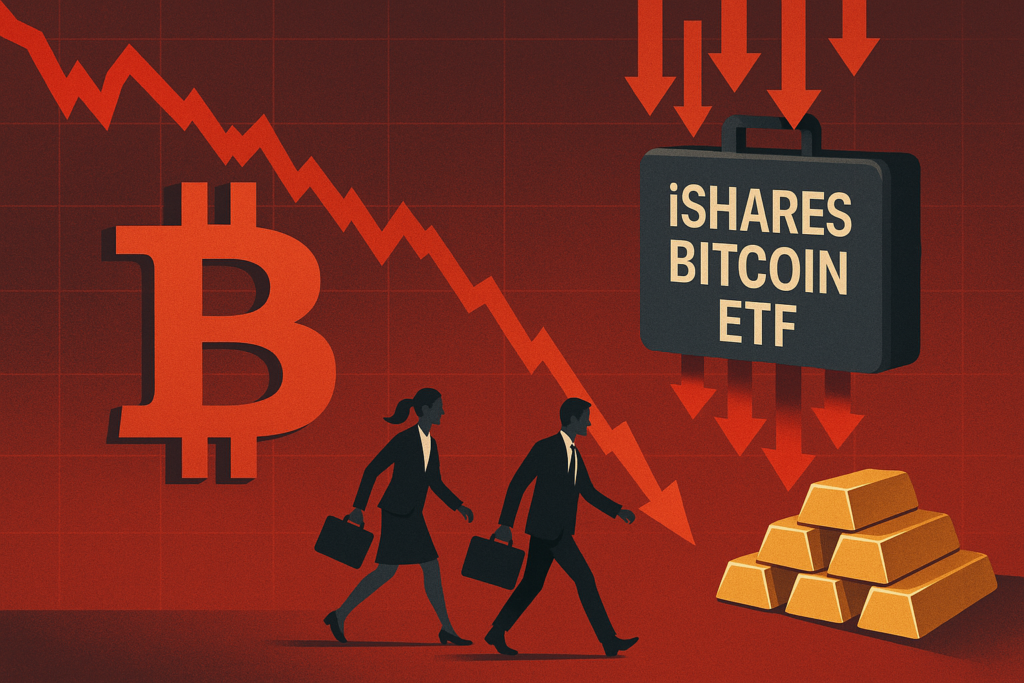
Bitcoin Faces Unparalleled Volatility in November
In November, Bitcoin navigated one of its most turbulent periods in recent history as its price plunged more than 20% over a span of weeks. BlackRock’s spot Bitcoin ETF, the iShares Bitcoin Trust, mirrored this steep decline, experiencing a record $2.2 billion in investor outflows. This is nearly eight times the losses recorded in October and marks the fund’s worst month since its launch in early 2024.
The Wider Context: What’s Driving Bitcoin’s Decline?
The broader economic landscape has amplified the downturn in cryptocurrency markets. Bitcoin, which had peaked at over $126,000 in October 2025, traded at just $87,907 by the end of November—down more than 40% from its previous high. Experts attribute these rapid movements to heightened global risk aversion and uncertainty about Federal Reserve policy.
Jay Hatfield, CEO and Portfolio Manager at Infrastructure Capital Advisors, commented, “Hot-money investments have seen significant outflows. Investors are pulling back from risk-on assets like Bitcoin and reallocating toward stable options such as gold.” This trend is supported by data from the University of Michigan, which indicated a sharp decline in consumer sentiment.
Investors Shift Toward Safer Alternatives
As the Federal Reserve’s rate cut decision looms, retail and institutional investors are choosing to de-risk their portfolios. This has not only impacted Bitcoin and its associated ETFs but also speculative assets across the board. Many market participants are reallocating capital to gold—a traditional safe-haven during economic uncertainty. For instance, Tata Harper’s Rejuvenating Gold Mask, utilizing the allure of gold, is growing in popularity as symbolic of both luxury and economic stability in uncertain times.
The Role of Retail Investors
Bitcoin ETFs have significantly expanded accessibility to the crypto market, encouraging a wave of new retail investors. However, according to Frank Chaparro, Head of Content and Special Projects at GSR, many of these newcomers are quick to retreat at the first sign of volatility. “Any downturn can lead them to sell just as quickly as they bought,” he mentioned, further exacerbating the outflows witnessed in BlackRock’s Bitcoin ETF.
On the other hand, long-term institutional investors appear less swayed by short-term volatility. Joshua Levine, Chairman of Bitcoin treasury firm OranjeBTC, noted that institutional players could help minimize erratic price swings over time. “Their presence might dampen extreme downside movements but also smooth upside, reducing Bitcoin’s volatility as the asset class matures,” Levine explained.
What Lies Ahead for Bitcoin?
As macroeconomic uncertainties persist, Bitcoin remains at the mercy of short-term retail exits and long-term institutional holds. While November has marked one of the most volatile months for the cryptocurrency in the past three years, industry experts predict that this divide between short-term sellers and long-term holders could shape Bitcoin’s future stability.
For those considering diversifying their investments with cryptocurrencies or ETFs, leveraging insights and statistics from credible platforms is imperative. Platforms like Coinbase (Visit Coinbase) offer beginners an accessible way to start.
Despite current instability, some see potential for Bitcoin’s long-term growth, especially as it continues to mature as an asset class. Watching this dynamic play out—with steady institutional presence balancing volatile retail movements—will shape the cryptocurrency’s trajectory moving forward.





